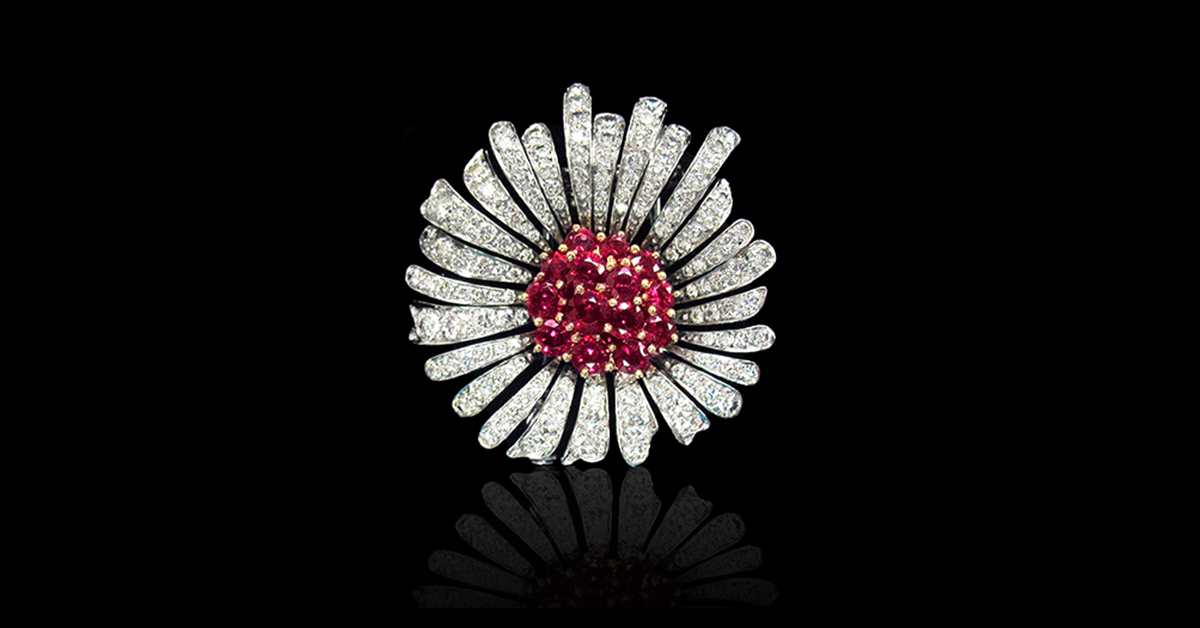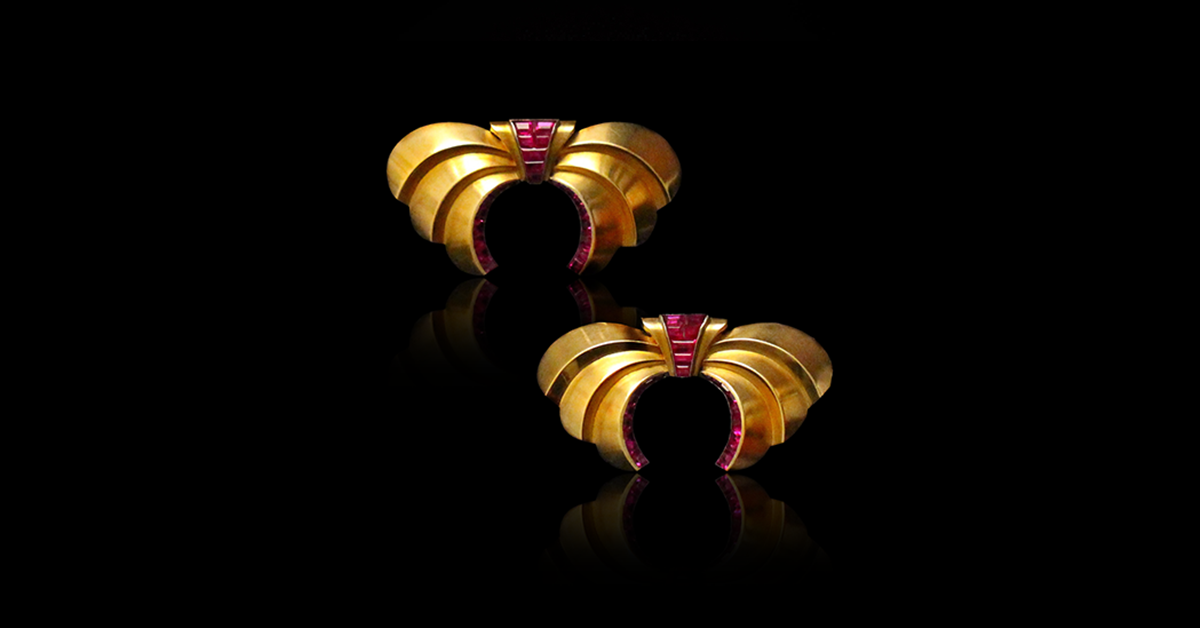Above: Art Deco platinum, carved ruby and diamond bracelet, courtesy of Paul Fisher, Inc.
Celebrated present-day as the July birthstone, rubies have unceasingly enchanted and entranced humankind. From Greek mythology to Burmese tradition, the scarlet stone has served as a symbol for various societies, cultures, religions, and philosophies. Aptly referred to as the “King of Gems” in Sanskrit, rubies continue to be one of the most precious and coveted gemstones.
Ruby and sapphire are a variety of the mineral corundum, a crystalline form of aluminum oxide. Corundum is a 9 on the Mohs scale of mineral hardness, second only to diamond, making it a highly popular and wearable gemstone.
Ruby’s iconic red pigment comes from the presence of chromium in the compound: the higher the chromium concentrations, the stronger the red hue. Chromium can also cause fluorescence, which further increases the red color intensity. Rubies of the most saturated color, coupled with natural fluorescence, are referred to as “pigeon blood”. Untreated, gem-quality rubies with vibrant shades of red are especially rare and highly sought-after, asserting higher per-carat prices in the colored stone market.
The inimitable geology of Central Asia, Southeast Asia, and Mozambique are all sources for exceptional ruby crystals. For centuries, deposits in Burma (now Myanmar), especially those from Mogok in Northern Myanmar, produced incredible specimens of rubies, some with extraordinary “pigeon blood” vibrancy. In the late 2000s, gem-quality rubies were discovered in Mozambique, and the country has since become the world’s largest ruby producer.
From armor augmentations to lavish ornamentation, craftsmen have employed the “King of Gems” for centuries, particularly as a mineral of choice for jewelry. Rubies have graced countless jewels through the various eras and design periods and continue to play an important role in the modern-day colored stone and jewelry fabrication markets.


References
Giuliani, G. & Groat, L. (2019, Winter). Geology of corundum and emerald gem deposits. Gems & Gemology, 55(4), 464-489. GIA. https://www.gia.edu/doc/WN19-geology-of-corundum-and-emerald-gem-deposits.pdf
July Birthstone. GIA. https://www.gia.edu/birthstones/july-birthstones
May, L. (2016, November 23). 5 minutes with… A Burmese pigeon’s blood ruby ring. Christie’s. https://www.christies.com/features/5-minutes-with-A-Burmese-pigeons-blood-ruby-ring-7917-1.aspx
Rees, L. (2020, August 21). See the world’s rarest and most famous rubies. Galerie Magazine. https://www.galeriemagazine.com/rubies-most-famous/
Ruby. SSEF. https://www.ssef.ch/ruby/
Ruby Care and Cleaning Guide. GIA. https://www.gia.edu/ruby-care-cleaning
Ruby Description. GIA. https://www.gia.edu/ruby-description
Ruby Quality Factors. GIA. https://www.gia.edu/ruby-quality-factor
Shor, R. & Weldon, R. (2009, Winter). Ruby and sapphire production and distribution: A quarter century of change. Gems & Gemology, 45(4), 236-259. GIA. https://www.gia.edu/doc/Ruby-and-Sapphire-Production-and-Distribution.pdf
Young, K. (2019, February 10). Rock stars: Diamonds may be a girl’s best friend, but blood-red rubies are a cut above other gemstones. CBS News. https://www.cbsnews.com/news/rubies-the-real-rock-stars/
